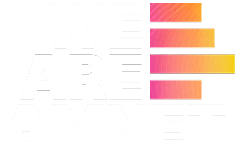Managing creative production in the insurance industry comes with its own set of challenges. Whether it’s navigating strict regulatory requirements, producing high-quality content at scale, or meeting tight deadlines, there’s always a lot to juggle. And with increasing pressure to create engaging and impactful content, having the right processes in place is essential.
This guide is designed to help you streamline your creative production efforts and improve your results. From scaling content production efficiently to optimizing workflows and leveraging technology, we’ll cover practical strategies tailored to the unique demands of the insurance industry.
Scaling Content Production for Insurance Companies
Scaling content production can feel overwhelming, especially in an industry like insurance where the stakes are high. From creating marketing campaigns and customer education materials to compliance-driven content, the demand for timely, high-quality output is constant. The good news? Scaling doesn’t have to mean overwhelming your team or sacrificing quality.
Let’s break down how you can ramp up effectively while staying efficient, consistent, and compliant.
Start with Streamlined Workflows
One of the first steps to scaling content production is simplifying how your team works. Inefficiencies—like redundant approvals or unclear processes—can slow everything down. Mapping out your current workflow and identifying bottlenecks is a great starting point. Tools like Trello or Monday.com can help you streamline task management and keep everyone aligned.
Automation is another game-changer. By automating repetitive tasks like formatting, scheduling, or even compliance checks, you free up your team to focus on more strategic, creative work. This not only speeds up production but also reduces errors.
Adopt Modular Content Creation
Scaling doesn’t mean starting from scratch every time. Modular content creation allows you to build reusable content blocks—like pre-approved headlines, visuals, or policy descriptions—that can be adapted across multiple channels. This approach ensures consistency while dramatically reducing the time it takes to produce content for different formats, like blogs, emails, or social media posts.
Leverage External Expertise
When in-house capacity is stretched, external partnerships can provide the extra support you need. Models like Smartshoring® combine the benefits of offshore production with the assurance of local client service teams. This approach allows you to ramp up quickly while maintaining the quality standards your brand requires.
External partners are especially helpful during peak times, like campaign launches or regulatory updates, when demand spikes. They can handle the high-volume, time-consuming tasks—like video editing, design adaptation, or localization—so your in-house team can focus on strategy and oversight.
Focus on High-Impact Content
Scaling isn’t just about producing more; it’s about producing the right content. Use data and analytics to identify which formats and topics resonate most with your audience. For example:
- Educational videos or infographics to simplify complex policies.
- Personalized communication that addresses specific customer needs.
- Compliance materials that are clear and easy to understand.
By prioritizing high-impact content, you maximize the value of your efforts while ensuring your team’s time is spent where it matters most.
Monitor and Adjust
Scaling is an ongoing process, not a one-time fix. Regularly review your workflows, tools, and content performance to identify what’s working and where there’s room for improvement. Flexibility is key—what works today might need adjustments tomorrow as customer demands, regulatory environments, or business goals evolve.
Scaling your content production might seem challenging, but with the right strategies, it’s completely achievable. For more detailed steps and actionable insights, check out our blog: 5 Strategies to Scale Your In-House Content Production Quickly. With the right approach, you can meet growing content demands without compromising on quality or compliance.
Optimizing Creative Workflows
Efficient workflows are the backbone of any successful creative production team, especially in the insurance industry. With compliance requirements, regulatory updates, and high customer expectations, delays or inefficiencies in your processes can have a ripple effect on your overall productivity. Optimizing your workflows isn’t just about doing things faster; it’s about creating a system that allows your team to deliver high-quality content consistently, even under pressure.
Here’s how you can build workflows that are flexible, efficient, and ready to handle the demands of the insurance industry.
Create a More Agile Marketing Production Team
The ability to pivot quickly is critical in the insurance world, where market demands and regulatory requirements can shift without warning. Adopting an agile approach can transform how your team operates by making processes more adaptive and responsive.
-
- Embrace Agile Methodologies:
- It’s a collaborative framework that can transform how your team approaches creative production. Unlike rigid, linear processes, Agile emphasizes flexibility, learning, and continuous improvement with every sprint. Projects are broken into smaller, time-boxed sprints where teams work toward clear goals. At the end of each sprint, feedback is gathered, results are analyzed, and processes are adapted for the next phase. This creates an environment of ongoing refinement, where teams learn from what works and adjust what doesn’t.
- Encourage Collaboration Across Teams:
- Silos are productivity killers. Cross-functional collaboration, where teams like compliance, design, and content work closely together, can significantly reduce delays. Tools like Slack and Microsoft Teams make real-time collaboration easier, ensuring everyone stays on the same page.
- Build in Flexibility:
- Flexibility is key when navigating regulatory changes or market shifts. Train your team to prioritize tasks effectively and adapt roles when necessary. For example, a writer might take on light editing during peak demand periods to keep things moving.
- Embrace Agile Methodologies:
Leveraging Technology and Innovation
In the insurance industry, technology is revolutionizing how marketing teams approach creative production. From automating repetitive tasks to analyzing customer data for deeper insights, today’s tools are helping marketers work smarter, faster, and more effectively.
But there’s more to technology than solving immediate challenges. The same innovations shaping your current processes are also driving larger trends that will define the future of insurance marketing. Let’s look at how AI and technology are streamlining creative production, and then explore the trends that are transforming the industry.
How to Integrate AI and Technology Tools to Streamline Content Production
Keeping up with the demands of content production while maintaining quality can feel like an impossible task. This is where AI and technology step in, offering practical solutions to ease the burden and optimize your workflows.
What makes AI truly transformative, though, is its ability to enhance personalization. AI can analyze customer data to tailor content and campaigns, making every interaction more relevant and engaging. This not only boosts customer satisfaction but also drives stronger results for your campaigns.
But the impact of AI and technology isn’t just limited to improving efficiency—it’s also shaping the broader direction of the insurance industry. The trends emerging today are directly influenced by these tools and their capabilities. For a detailed exploration of these trends, check out our blog: Insurance Marketing Trends to Watch in 2025.
Enhancing Content Quality and Impact
In the insurance industry, where complex policies and technical jargon often dominate, the quality of your content can make or break customer engagement. High-impact visuals like infographics and videos are invaluable tools for simplifying intricate concepts, while lessons from successful marketing campaigns offer a roadmap for improving your creative production strategies.
Best Practices for Developing High-Impact Visuals Like Infographics and Videos
Visual content is one of the most effective ways to capture attention and communicate complex ideas quickly and clearly. Whether you’re explaining policy details or illustrating customer benefits, high-quality visuals can bridge the gap between complexity and clarity.
- Simplify Complex Concepts with Infographics:
- Infographics are perfect for breaking down policy details, compliance requirements, or statistical data in a visually appealing and easy-to-digest format.
- Keep your designs clean and focused. Use icons, color-coded sections, and charts to guide the reader’s eye and emphasize key takeaways.
- For example, an infographic illustrating the steps of a claims process can help customers understand what to expect, reducing anxiety and confusion.
- For practical tips and examples of how to use infographics effectively in insurance marketing, check out our blog: How Creative Infographics Simplify Insurance Concepts.
- Use Videos to Build Trust and Educate Customers:
- Video content is a powerful medium for engaging your audience and explaining your offerings. Use short, informative videos to highlight product features, demonstrate benefits, or share customer success stories.
- Keep videos concise—30 to 90 seconds is ideal for social media—and use storytelling techniques to make them relatable and memorable.
- Animated explainer videos are particularly effective for illustrating abstract or technical concepts, like how a policy works or the value of bundling coverage.
By incorporating infographics and videos into your content strategy, you can create visually engaging assets that simplify decision-making for your customers and enhance their overall experience.
Case Studies: Successful Insurance Marketing Campaigns
Looking at what works in real-world campaigns can provide valuable insights for your own creative production efforts. Here are a few examples of successful insurance campaigns and the lessons they offer:
- GEICO’s Humor-Driven Campaigns: GEICO has established a remarkable reputation through its innovative advertising campaigns, driven by memorable iconic characters. By embracing humor and storytelling, GEICO’s advertising initiatives have reached a broad audience and created a distinct brand identity. Latterly
- Allstate’s ‘Mayhem’ Campaign: Allstate’s ‘Mayhem’ character has become a cultural touchstone, reshaping the insurance advertising landscape. This campaign uses humor to discuss potential disasters in a relatable and engaging way, making the brand’s message more accessible to consumers. PandaHub
To replicate the success of these campaigns:
- Focus on Emotional Resonance: People buy insurance to feel secure, so create content that speaks to their concerns and aspirations.
- Use Storytelling: Highlight real-life scenarios or customer experiences to show how your offerings make a difference.
- Keep It Simple: Avoid overwhelming your audience with technical details. Use visuals and concise messaging to make your content accessible and engaging.
By developing high-impact visuals and learning from successful campaigns, you can elevate the quality of your content and create marketing materials that not only inform but also inspire and connect with your audience. High-quality content isn’t just an advantage—it’s essential for standing out in a competitive market.
Enhancing Customer Engagement through Creative Content
Customer engagement is at the heart of successful insurance marketing. By creating content that resonates with your audience and encourages interaction, you can build stronger relationships, foster trust, and drive loyalty. Two powerful ways to enhance engagement are leveraging user-generated content (UGC) and repurposing your existing marketing assets to maximize their impact.
Encouraging Policyholders to Share Their Experiences for Marketing
Your policyholders are one of your greatest marketing assets. When customers share their positive experiences, it builds trust and adds authenticity to your brand messaging. Leveraging user-generated content (UGC) like testimonials, reviews, and personal stories can significantly boost engagement.
Here’s how to encourage and showcase UGC effectively:
- Create a Platform for Sharing: Make it easy for customers to share their experiences. Set up dedicated forms on your website, promote a branded hashtag on social media, or invite feedback via email campaigns.
- Incentivize Participation: Offer small rewards, like discounts or exclusive perks, for customers who provide testimonials or participate in social media campaigns. For example, running a contest where policyholders share stories about how your insurance helped them can generate valuable content and engagement.
- Showcase UGC Creatively: Highlight testimonials in your email newsletters, create video montages of customer stories, or use quotes as part of your social media posts. Ensure these stories are authentic and relatable, as they build credibility and resonate with potential customers.
Encouraging policyholders to become advocates for your brand not only increases engagement but also reinforces trust among prospective clients.
Are You Repurposing Your Insurance Marketing Campaign Assets?
Creating fresh content for every campaign can be time-consuming and resource-intensive. That’s where repurposing comes in. By reusing and adapting your existing assets, you can extend the life of your marketing campaigns and maximize ROI without starting from scratch.
Here’s how to make the most of your creative assets:
- Turn Long-Form Content into Bite-Sized Pieces: Break down whitepapers, reports, or blog posts into smaller formats like social media posts, infographics, or short videos. For example, if you’ve created an educational blog about choosing the right insurance policy, repurpose key points into a series of posts for LinkedIn or Instagram.
- Localize and Personalize: Adapt your content to suit different demographics or regions. By tweaking the language or tailoring the messaging to specific customer segments, you can make your campaigns more relevant without creating new content from scratch.
- Reuse Visuals Across Channels: Don’t let your visuals sit idle after one campaign. Use them for other purposes, such as embedding infographics into newsletters or repurposing ad creatives for social media.
By repurposing content, you not only save time and resources but also maintain consistency across your marketing efforts while reaching a broader audience.
Enhancing customer engagement through creative content doesn’t have to be complicated. By encouraging your policyholders to share their experiences and repurposing your existing assets, you can create a steady stream of engaging, authentic, and impactful content that resonates with your audience and drives results.
If your in-house resources feel stretched too thin? This is where partnering with an offshore expert can make all the difference. At We Are Amnet, we specialize in helping companies streamline their creative production processes through our unique Smartshoring® model. By combining the flexibility and scalability of offshore production with the assurance of local client service teams, we help you:
- Expand your production capacity during peak times.
- Maintain quality and compliance standards across all content.
- Optimize your workflows to save time and reduce costs.
Related Blogs:






